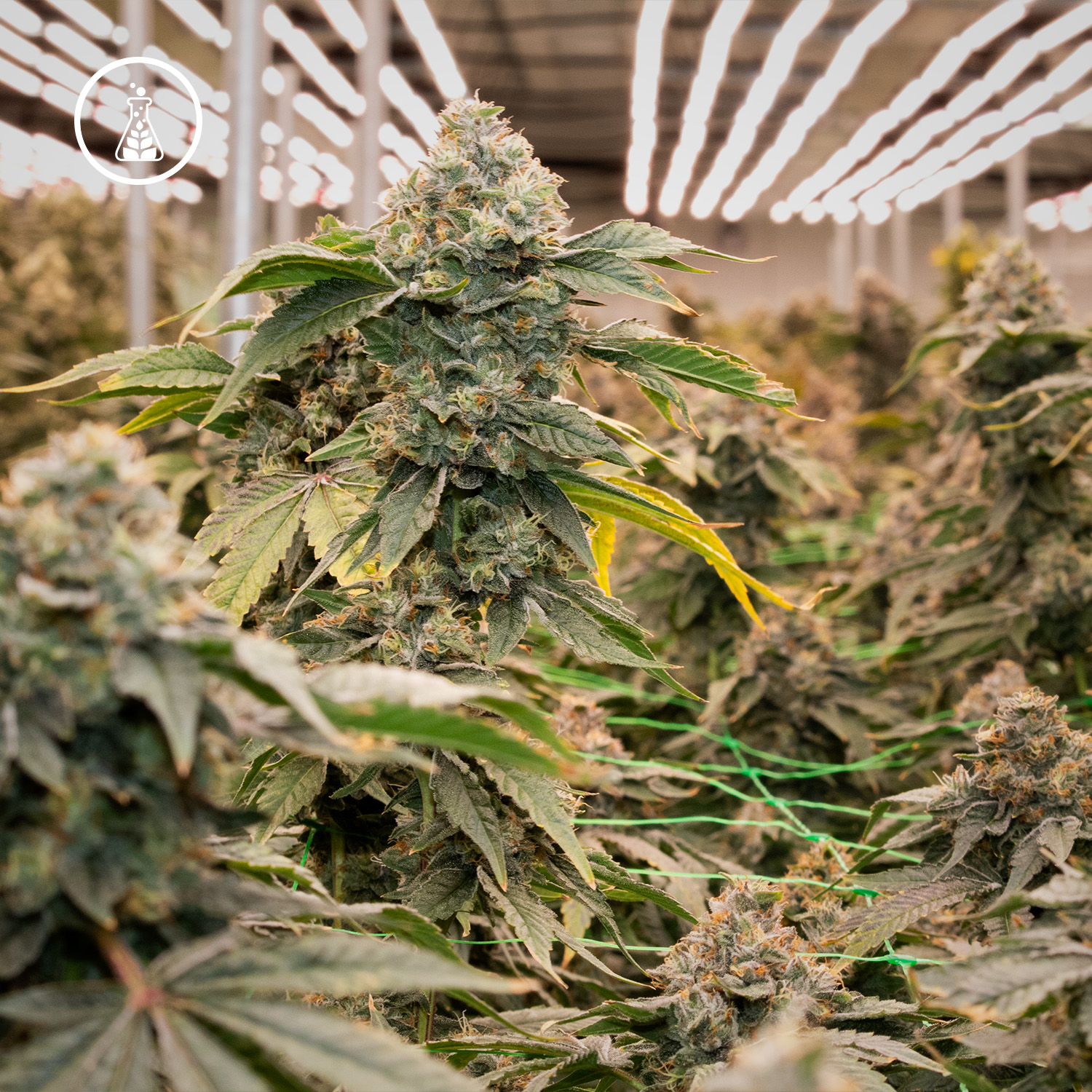CANNABIS TISSUE CULTURE WITH ROSS CLAPPER

Sanctuary Medicinals has experienced remarkable growth and innovation since its inception. With advances in our cultivation techniques, product development and research, we want to share our advances from behind the scenes. One groundbreaking innovation at our Cultivation Facility is Cannabis Tissue Culture. This cutting-edge technology has the potential to revolutionize the way we grow and cultivate our beloved cannabis plants.
What is Cannabis Tissue Culture?
Tissue culture is a technique commonly used in plant science, agriculture and horticulture. Although it's been around for decades it's a fairly new concept to the cannabis industry. Tissue culture involves the growth of plant cells, tissues or organs in a controlled, sterile environment, often on a nutrient-rich agar gel. Cannabis Tissue Culture, specifically, involves the propagation of cannabis plants through the culturing of plant cells or tissue samples.
The process begins with the selection of a healthy cannabis plant as the "donor." Small tissue samples, such as a small piece of leaf, get taken from this plant and placed into nutrient-rich agar gel. Under highly controlled conditions, these tissue samples can be induced to develop into whole plants! This method offers several advantages over traditional cultivation techniques.
The easiest way to understand the process is to think of it as cloning. Our lab team will take a piece of a plant and grow it into a genetically identical copy!
Benefits of Cannabis Tissue Culture
Healthy Plants!
One of the most significant advantages of tissue culture is the production of disease-free plants. By starting with a healthy donor plant and maintaining strict sterilization procedures, tissue culture can virtually eliminate the risk of pests, pathogens or viruses entering the cultivation process and the facility as a whole. This ensures that Sanctuary's cannabis is not only healthy to the maximum degree, it grants a statistically minimal risk of negative exposure.
Genetic Preservation
Tissue culture allows for the preservation of the genetic characteristics of a specific cannabis strain. This ensures the consistency and stability of desired traits, such as potency, aroma and yield, across multiple generations of plants. Therefore, that one batch you loved is here to stay!
Rapid Clonal Propagation
Tissue culture enables the rapid multiplication of cannabis plants. Unlike traditional cloning methods that may lead to genetic drift over time, tissue culture produces genetically identical clones, maintaining strain purity.
Conclusion
Tissue culture plays a pivotal role in ensuring the quality, consistency and sustainability of cannabis cultivation in the years to come, unlocking new possibilities for both medical and recreational cannabis users. Sanctuary is committed to providing the absolute best, cleanest and most effective products for our patients and consumers. With the help of our lab team and the science of tissue culture, we can continue to provide just that.
CANNABIS TISSUE CULTURE DEEP DIVE: ZMINTS #11
Let's explore the fascinating world of Cannabis Tissue Culture with behind-the-scenes lab work on our Zmints #11 strain.
Zmints #11 Undergoing the Deflasking Process
Photo: Zmints #11 right after removing it from its sterile vessel. Looks a bit wild at first!
Photo 1: Zmints #11 with cleaned roots and defoliation. All the agar must be removed before
transplanting as it can be food for unwanted microorganisms. The defoliation helps to stimulate new growth, increases airflow and light penetration.
Photo 2: Zmints #11 transplanted into coco. A dome is then placed on for the next few days to slowly acclimate the plant to open air conditions. It's used to living in a vessel with 100% humidity so if you do not acclimate the plant it will quickly wither up and die in the open air.
Photo 3: Zmints #11 three weeks post-Deflask. Excellent branchy structure starting at the base of the plant. Clean healthy start for our mom stock.
Photo 4: In the lab Ross is doing nodal tissue culture, so the pieces that get initiated, or started, on the agar medium are the actual nodes of the plant, not the leaf. The "node" is the point where the leaves stems and flowers grow from. The picture below depicts pieces of plant that are about to be sterilized for initiation.
Photo 5: The easiest way to understand the process is to think of it as cloning. This photo illustrates one plant copied many times in separate vessels. Incredible!

Read Our Blog
-
What is Liquid Shatter?
The vast majority of cannabis consumers understand the psychoactive nature of THC, and an increasing number of people are discovering and benefiting from the use of CBD. What many do not know is that the cannabis plant does not directly produce THC and CBD. Instead, the […]
-
Show Your Pride & Support By Considering These LGBTQ+ Brands
No matter how you celebrate Pride month, cannabis is sure to add some extra joy to your festivities. The experts at team Headset selected five LGBTQ+ owned brands that we believe deserve your attention the next time you visit your local dispensary. Product Type: Beverage Top-Selling Item: Blood […]

